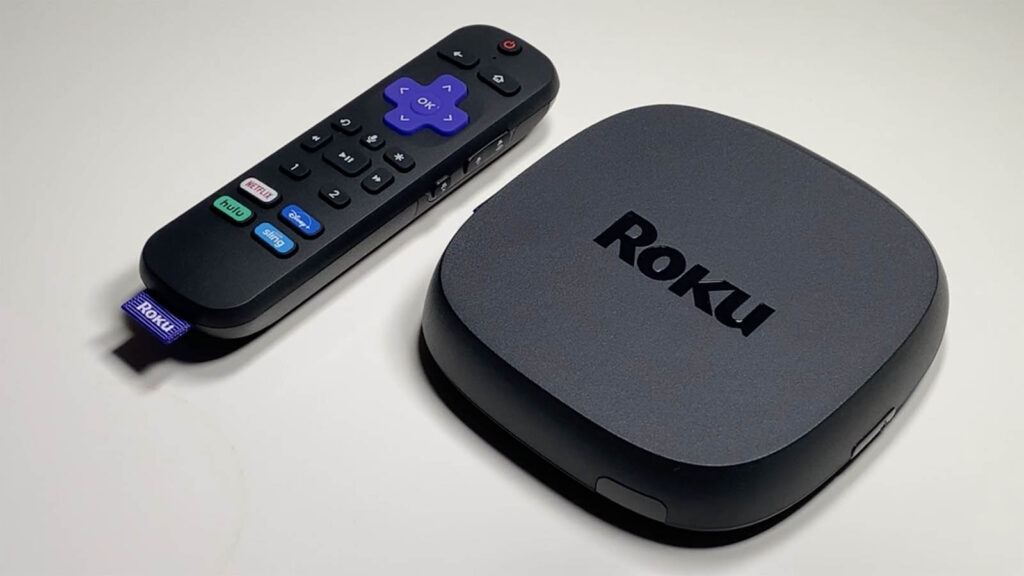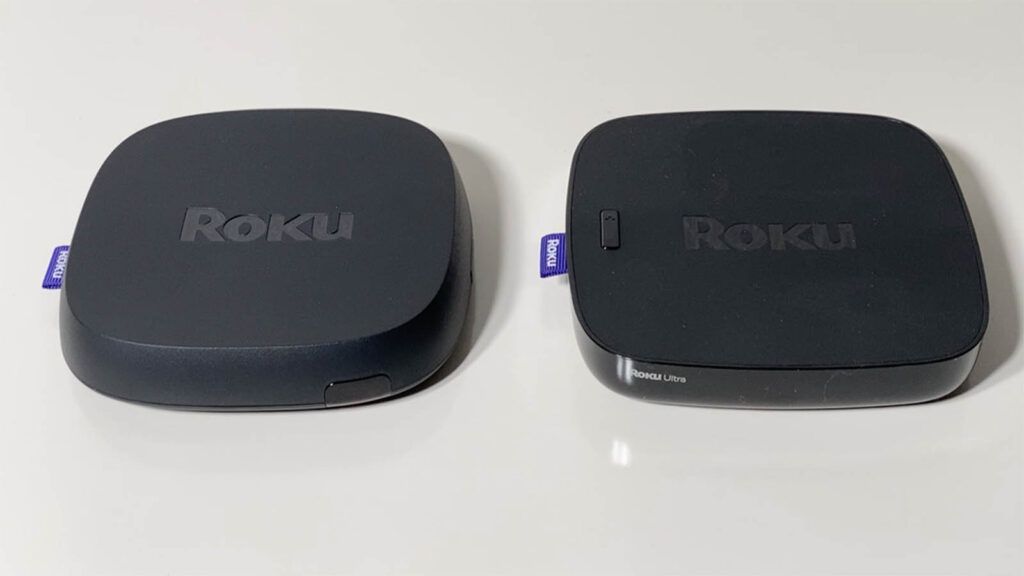The latest Roku Ultra is here and the company’s promising a faster, more feature-rich iteration of its top-of-the-line dedicated streaming device. Of course, this isn’t the first Roku device to bear the name “Ultra” and the 2019 version took the top spot in our recent Roku vs. Roku hardware comparison. So does this 2020 model offer up enough improvements to warrant that Ultra moniker? That’s what we’ve spent the past week trying to find out.
What’s New With the 2020 Roku Ultra?
For this 2020 Ultra, Roku’s boasting a number of new features and improvements — with a few more coming later in the year (more on that later). Among the new perks are potentially better wireless coverage compared to earlier models. That could be especially handy if you’re trying to stream content to rooms far from your router.
Other new additions include support for Dolby Vision HDR, Dolby Atmos, and Bluetooth, which should make connecting other devices to cast music, podcasts and other media easier.
A few more features are coming a little later. For one, our review unit wasn’t packing the latest Roku OS 9.4, which promises a range of performance improvements. We’re looking forward to checking out OS 9.4, but for now, the software update and the perks it’s packing remain in the “coming soon” category for the time being.


And then later this year, Apple AirPlay 2 and HomeKit are coming to certain 4K-capable Roku streaming devices, bringing with them easier media casting and smart home integration.
But even without OS 9.4 and new Apple-specific feature support, we’ve got a lot of side-of-the-box highlights to examine in this 2020 edition of the Roku Ultra.
Hardware and Features
Design-wise, while this new version certainly follows Roku’s design ethos (flat, rounded, boxes with a bit or purple flair), it’s pretty easy to tell apart from the 2019 model it replaces. It’s a bit taller than last year’s version and the sides now taper upward a bit. The most noticeable exterior change, though, is a rougher plastic texture where last year’s Ultra had glossy plastic surrounding its sides. It’ll be up to you to determine whether that makes for a more upscale streaming device, but it seems like it’ll resist fingerprints bit better than the 2019 model.


Ports and buttons have also changed locations a bit this year. The USB port that was once on the side now joins the Ethernet port and HDMI connections on the rear panel, giving the 2020 Ultra a bit cleaner look overall. Also, that microSD slot from earlier models was cut this for this year’s model.
Elsewhere in the Ultra’s packaging, you get the company’s Voice Remote with personal shortcuts — you can customize a pair of buttons to your liking. You also get an HDMI cable, AA batteries, a quick start guide, power cable and earbuds for use with the Ultra’s Private Listening mode, a feature that carries over from earlier versions.
Roku’s product details tout a “new and improved” processor in this new Ultra, breaking away from the ARM Cortex A53 chip that’s powered a whole host of Roku devices in the past, including last year’s Ultra, as well as the Express, Streaming Stick and Premiere lines.


This time around, the Ultra is packing a RealTek RTD1319 CPU and the company says it should offer top-of-the-line performance, including fast app loading. Luckily, we have ways of verifying such claims.
It’s also got 2GB of RAM on board, which matches what the 2019-era Ultra offers. And its maximum resolution tops out at 4K with HDR, although, again we see an improvement here compared to last year thanks to not just Dolby Vision support, but also HLG, or Hybrid Log Gamma support.
Overall, the 2020 Roku Ultra boasts a promising list of upgrades, but the proof is in the streaming.
Setup and Performance
Setting up a new Roku device remains as straightforward as ever. Just connect the device to your TV via an HDMI cable, plug it in, and then just follow the on-screen prompts. If you’re connecting via WiFi, you’ll have to enter those credentials and you’ll also need to register your new Roku Ultra, so it’s worth having a phone, tablet, or computer handy. If this is your first Roku, you’ll need to register a new email address.
Once you’ve registered the device, you can assign it a name and specify a location in your house — a useful feature if you have multiple devices throughout your home. The setup process also includes a whole bunch of offers to sign up for various services — some free, some not. But if you’re not interested, you can just skip right past those and get to actually using the Ultra.
When you start using the Ultra for the first time, you’ll be treated to a quick video overview of its features, including the mobile app, sharing media, and using the search function. It’s a nice intro for first-time users and it might be a useful refresher course for Roku veterans too.
Like we said earlier, our 2020 Roku Ultra review unit wasn’t equipped with version 9.4 so it more or less behaves like you’d expect if you’ve used a Roku device in the past few years. The Ultra can be set to auto detect the display it’s connected to, and with our LG OLED, it correctly identified it as a 4K display with HDR support.
With Dolby Vision now included, we naturally set about testing the new Ultra on some content that supports the fancy HDR format. We checked out Dolby Vision offerings on services like Apple TV+ and Disney+, including streaming a 4K version of Thor Ragnorok — for… research purposes.
By default, though, our 2020 Ultra enabled Dolby Vision HDR mode at all times, including the home screen and other content that doesn’t actually support HDR. That could be an issue if you’ve carefully calibrated your TV’s non-HDR modes for specific use cases. For instance, on our LG OLED, we have a couple of non-HDR modes we flip between depending on whether it’s bright outside or the living room is dark, but full-time Dolby Vision overrides those modes from the get go.
It’s something we noticed when we reviewed the TiVo Stream 4K a few months back. TiVo has since addressed the issue, and thankfully the Roku Ultra lets you disable having Dolby Vision on at all times by heading to Settings. In the Advanced Display Settings, you can turn off the HDR-at-all-times behavior pretty quickly.
However, we should note when we turned off that feature and then immediately returned to a 4K Dolby Vision stream of Thor Ragnorok, the Ultra froze and reset itself. A bit weird, yes, but once it restarted, we were able to resume the films in Dolby Vision without issue. So if you do opt to turn the full-time HDR feature off, maybe consider a quick restart just in case. For what it’s worth, we were unable to recreate the issue despite several attempts to recreate it.
Meanwhile, it was easy enough to connect an iPhone to the 2020 Ultra via Bluetooth. And once that connection was made, we could easily play music and podcasts on the big screen from the phone.
So yes, the setup process was straightforward and Dolby Vision offers up the expect depth and detail (despite one isolated hiccup), but how does this new 2020 Roku Ultra perform overall, and does it provide an upgrade over last year’s version?
Well, like we mentioned at the top, we did indeed put four of Roku’s devices through an app gauntlet of sorts earlier this year. We tasked each device with loading up nine streaming apps in a specific order and we saw how quickly they could load each one. That suite of apps consisted of Netflix, YouTube, Amazon Prime Video, Disney+, Hulu, ESPN, Pluto TV, The Roku Channel, and the Roku Tips and Tricks Channel. And then we fired up Netflix once more to see if the devices could load the app quicker the second time around.
When we conducted our first comparison, the 2019 Roku Ultra prevailed with an overall time of 78.17 seconds, the only sub-100-second time in our tests.
Naturally, we had to put the latest Ultra through the same wringer. So how did it do? Well, see for yourself.


Yep, that’s the 2020 Roku Ultra scoring an overall time of 66.63 seconds, or a little under 15% faster than last year’s version. It scored quicker app-load times in almost every stage, but what about the ones where it did worse, like with Netflix and Disney+? Well, it’s been a few weeks since we conducted that initial comparison, and odds are various apps have been updated during that time.
So in the interest of fairness, we pulled out the 2019 Ultra, updated all its apps and software, and put it through the tests one more time. How did it do this time? Well, as you can see with the updated results below, the 2019 Ultra did a little better in some apps, and a little worse in others.


And its overall score improved compared to the last time we tested it. But more significantly, those wins in the Netflix and Disney+ apps, where it seemed to do better than the 2020 Ultra, disappeared. And the current Ultra won in each stage, ending up with an overall 13.67% faster performance than the 2019 Ultra.
So yes, performance-wise the 2020 Roku Ultra is a bit more Ultra than last year’s model.
Wrapping it All Up
In the end, Roku’s top-of-the-line Ultra remains its highest performing dedicated streaming box, outpacing last year’s Ultra by a solid margin in each our speed tests. Now, if you already own that 2019 model, is it worth shelling out another $99.99 for the upgrade? That seems unlikely, unless you highly value that Dolby Vision support. And of course, Dolby Vision hardware compatibility doesn’t mean much unless you can also enjoy supported shows and movies, so you’ll get more value out of this feature if you have, say Disney+, Apple TV+, or Netflix’s Ultra HD/HDR plan.
Beyond that though, the 2020 Roku Ultra still offers some welcome features in a familiar, dependable bit of hardware even if you don’t need fancy HDR support. The remote remains easy to use and the menus and app support are top-notch — though yes, we’re still waiting on HBO and Roku to make peace. The recent appearance of a Peacock app gives us hope.
Overall, this 2020 model is a worthy update to the Ultra moniker, with strong performance, quick app loading, and more. And it could get even better once Roku OS 9.4 comes along, but stay tuned for more on that soon. For now though, if your looking for a top-of-the-line, feature-packed streaming box, the 2020 Roku Ultra deserves a good, long look.



